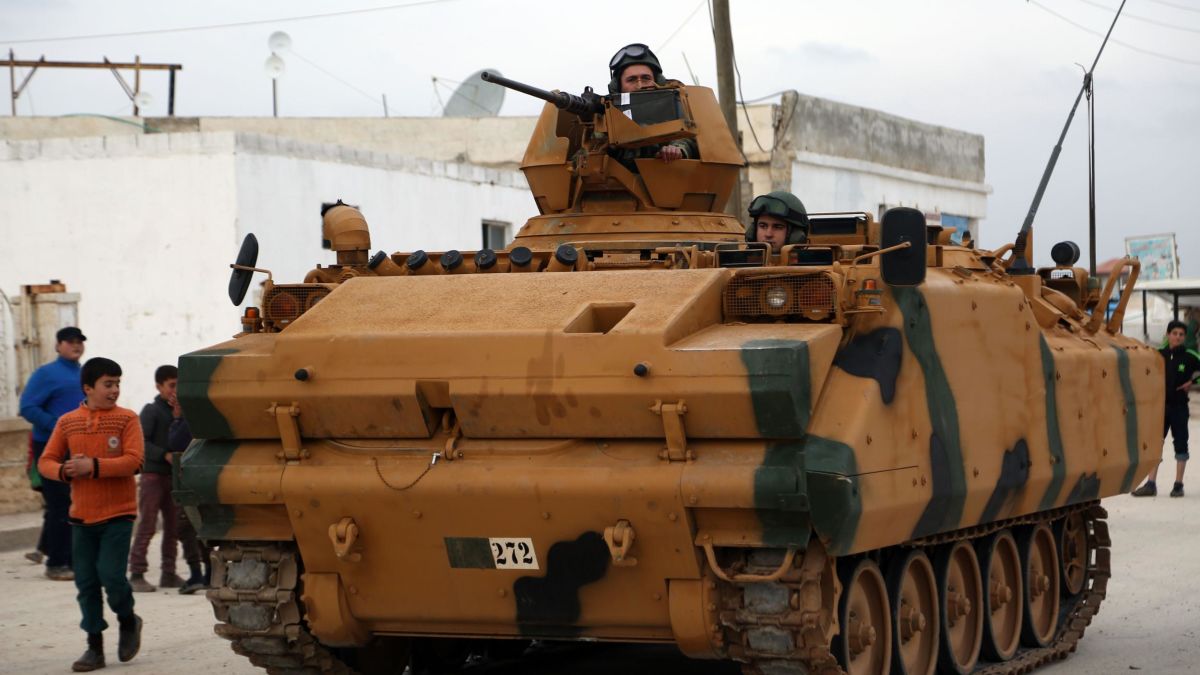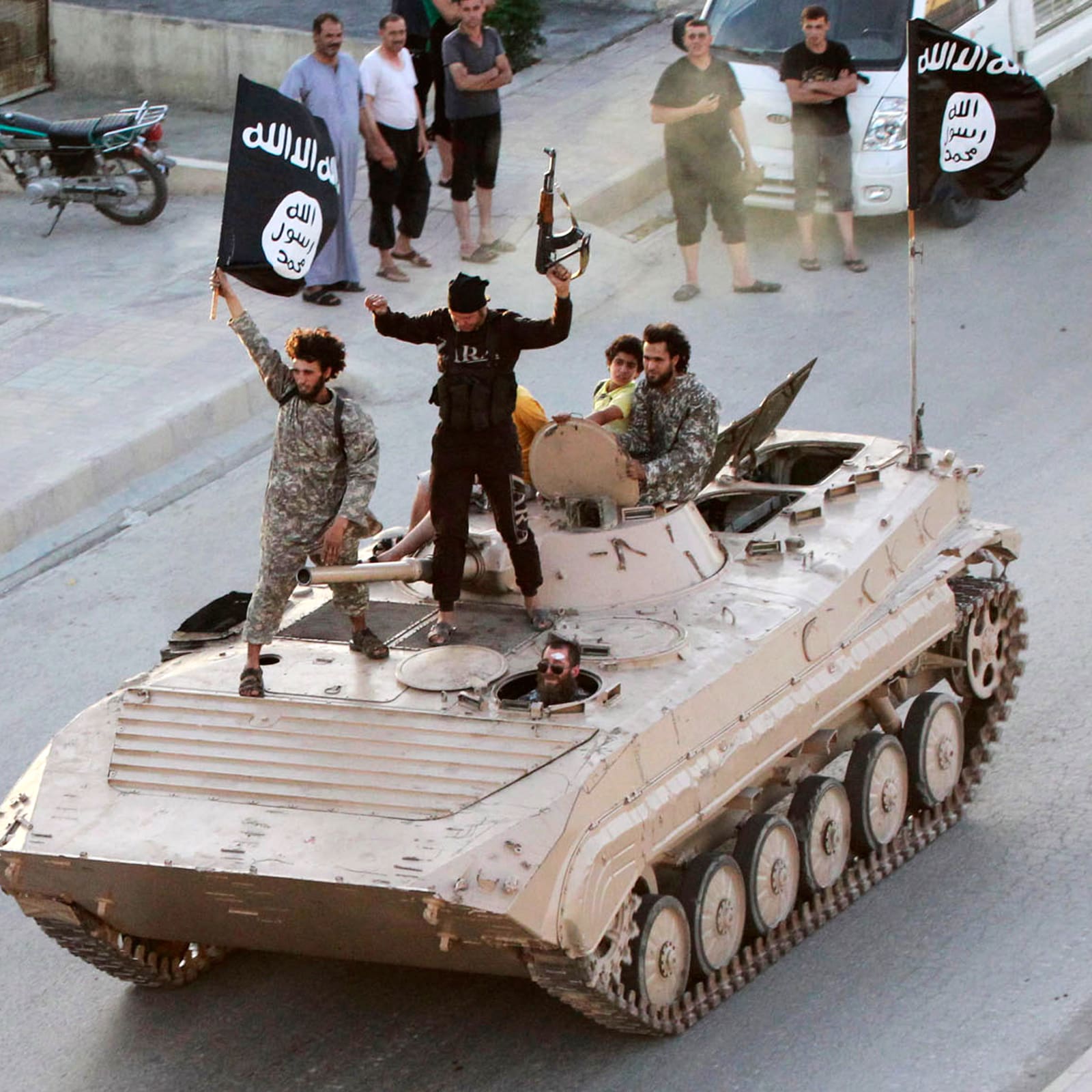Isis Tank Massacre - Paolo Pellegrin People from the village of Bajurbuk near Bashiqa were told by ISIS that they would all be taken to Mosul in the morning, so in the middle of the night they left the village and found Behi (... )
Having first worked together covering Gaza in 2011, Magnum photographer Paolo Pellegrin rediscovered himself with journalist James Verini near the besieged city of Mosul, Iraq in the fall of 2016.
Isis Tank Massacre

The battle for Mosul has seen the Iraqi army and Kurdish forces, backed by coalition forces, finally liberate the city, which has been held by the Islamic State (IS) since June 2014. The fighting has lasted for more than nine months and house-to-house violence was observed. The battle, described by the Pentagon as "the most significant urban battle since World War II."
These Are The People Making Captagon, The Drug Isis Fighters Take To Feel 'invincible'
It is seen from the beginning of the battle, the height of the battle and the eventual end of the conquerors of Mosul. His new book,
Plot the bloody siege of Mosul by setting it in the context of the rise and fall of ISIS in the decades-long history of Mosul's devastating conflict and the wider history of Iraq.
The cover shows a photograph by Pellegrin of a resident of the village of Bajurbuk near Bashiqa, Iraq, who fled IS and took refuge behind the Kurdish Peshmerga line.
Here we share an exclusive excerpt from an upcoming book with Verini, featuring a selection of Pellegrin's photos and previously unseen iPhone images from his time covering the Iraq war. . These images do not necessarily relate to specific events in the text.
Chemical Weapons الأرشيف
Paolo Pellegrin's Peshmerga soldiers, accompanied by tanks, armored vehicles and US special forces, begin a two-day march towards Bashiqa, ISIS's last stronghold in Kurdish territory. These (...)
ISIS fighters soon encountered resistance in small villages around Bashiqa. Iraq. 2016. © Paolo Pellegrin | Magnum's photo
Iraq and its neighbors are said to be born lazy, a country that refuses to move on from the past. But I think Iraqis have a knack for putting things behind them. They are good at making appropriate reminders. At the time of the rise of the Islamic State group, they are almost simultaneously digesting bad luck. What are their options?

"If you live in Nineveh, you've changed masks many times in the last fourteen years," a student of Iraqi politics told me. For us, it is unthinkable to join a terrorist group knowing that you will not always be in it. He won't necessarily follow you. They will forgive you. In Iraqi culture, you can kill people, you can kill people's relatives, and you can be forgiven. It doesn't always work, but there is an expectation that you will have a good chance. You cannot repay the bad things that someone has done to you in Iraq. If you do, all of Iraq will die.
Video Feature: Surviving An Isis Massacre [includes Graphic Images]
Paolo Pellegrin, an ISIS prisoner in ASAISH (Kurdish Intelligence), opens a secret prison on the outskirts of Kirkuk. Kirkuk. Iraq. 2015. © Paolo Pellegrin | Magnum's photo
Paolo Pellegrin Mohammed Hasali, deputy director of Asaish (Kurdish Intelligence) in Kirkuk, posted on his phone a photo of an ISIS terrorist they know had recently entered Kirkuk. Xinhua. Iraq. 2015. © Paolo Pellegrin | Magnum's photo
Although the Caliphate only lasted more than three years in Iraq, that time created more memories than anyone cared to remember. Even before the Battle of Mosul, public shrines for war martyrs existed everywhere from the Zagros region to the fishing villages of the Iranian Gulf to the Arabian Desert. Signs and signs and billboards and pictures of plastic flowers and candles, signs hanging and hanging from the roads and checkpoints and intersections at mosques and restaurants at four intersections on the flyover and on the banks of the river. Nails and glued and glued to walls, light fixtures, windows and railings.
Paolo Pellegrin, a soldier of the Iraqi 9th Armored Division, fell while running through the streets during a clash with ISIS fighters in the Entesar district east of Mosul. Iraq. 2016. © Paolo Pellegrin | Magnum's photo
Massacre Warnings Signal Now Is The Time To Attack Isil—commentary
I arrived in Baghdad in July 2016 at the time of the bombing. At least 300 people were killed by a car bomb in Qarada, a major Shiite business district. The torn-up building on Market Street is covered with black netting, like a huge cane hanging photos of 300 victims, if not three hundred, almost as many. I drove to Dululiya, a town on the Tigris near Tikrit, where locals rallied two years ago to quell ISIS, a rarity in those days when the jihadists seemed unable to do so. I stopped, especially in the Sunni city. At the entrance to Dululiya is a new cemetery for civilian-soldiers who lost their lives in the four million-round battle as the battle for the city unfolded. (Who did the bullet calculations? No one knows for sure.) A low painted red wooden wall surrounds dozens of graves, each with a portrait of the deceased. The cemetery is on a straight road near the checkpoint, so if you drive into town, you have no choice. I continued north to Mount Sinjar, where thousands of Yazidi men were killed and their wives, daughters and sisters forced into sexual slavery, and where the Kurdish peshmerga fought. To protect them and Kurdistan. A mountain road was leveled and the terraces were planted with whatever saplings emerged from afar. As I got closer, they changed to a wood paneled TV. It wasn't until I was in front of them that I realized they were plaster objects, and their exteriors were painted white-brown on the inside, each with a framed photo of dead peshmerga.
Paolo Pellegrin A large tomb around Sinjar. The border town of Sinjar was liberated after more than a year of ISIS occupation in mid-November by a joint operation involving 7,500 Kurdish and Yazidi Peshme (...)
Rga and coalition airstrikes. A large part of the city was completely destroyed. Xinhua. Iraq. 2015. © Paolo Pellegrin | Magnum's photo

The only sector of the Iraqi economy that has not been destroyed by the Caliphate is the printers who are kept alive with the dead. After a bomb explosion or shooting, images of the deceased are sent electronically or manually to a printing press, where the images are enlarged and decorated with icons and symbols placed around the victim's face. Flowers, guns, flags, Quran birds. If the dead are Shia, the shrine of Imam Hussain in Karbala or Caliph Ali in Najaf may oat near their faces. If Sunni, Dome of the Rock in Jerusalem; If the Kurdish shadow of Zagros. Memento mori is available in all sizes. They range from photos of bags to the so-called Speicher massacre, one of the largest in Iraq.
Key Syria Town Of Al Qusayr Falls To Government Troops
Paolo Pellegrin Kurdish Peshmerga in a front line position in Sinjar. Sinjar was captured by ISIS, but the Peshmerga regained control of the area and now hold two positions on the wire (...)
N. The line between ISIS and Peshmerga is very close, in some cases around 100 meters, and there are frequent shootings. Xinhua. Kurdistan. Iraq. 2015. © Paolo Pellegrin | Magnum's photo
Iraqi military spokesman Paolo Pellegrin fired on positions held by ISIS in the building next door. East Mosul. Iraq. 2016. © Paolo Pellegrin | Magnum's photo
In the second week of June 2014, after the capture of Mosul, the jihadists besieged the Iraqi Air Force as they tried to escape from Tikrit Air Base, still known by the American name Camp Speicher. They were taken to what was once Saddam's palace in Tikrit, a city about halfway between Baghdad and Mosul on the island of Tikrit. Along the river, they were executed one by one, mostly with bullets to the back of their heads. Some they threw into the water, others into the grave. The graves are very large, they were captured by satellite cameras.
As Isis Take Kobane, Nato's Second Largest Army Sits On The Sidelines
"Islamic State, whatever it is, is now very obvious" - James Verini
Although it wasn't clear at the time — it happened before the capture of Mosul — Speicher's massacre would mark the first major setback for the Islamic State group. The killings have angered many moderate Sunnis, who have so far identified with jihadist missions because they have not only tired Iraqi Sunnis of the message they are demanding. Support has been expressed by Sunnis in many countries and not just extremists, but people like Abu Omar and Abu Fahad, people you and I would consider kind and compassionate. He called on the Sunnis to see the wider Sunni phase - the selfish Gulf monarchy. Egypt's brutal and extremist army overthrew and imprisoned a legitimate Muslim Brotherhood. Turkish rule? the Iranian-controlled Lebanon and
Isis statue, tiananmen square massacre tank man, wings of isis, isis necklace, isis jacket, tiananmen square massacre tank, camelbak isis backpack, isis bras, camelbak isis, isis wings, isis down jacket, isis wigs

0 Comments